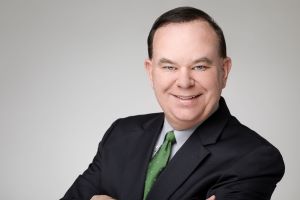Adapting and evolving in almost all aspects of our everyday lives is par for the course amidst a global pandemic, and that includes how we travel (if we do so at all).
In April 2020, airlines suffered a steep drop in the number of passengers carried, as stay-at-home orders were enacted throughout the country. And although air travel improved further into 2020, there was still a major deficit compared to the previous year. According to data from the Bureau of Transportation Statistics, U.S. airlines carried 70% fewer scheduled passengers in August 2020 than in August 2019.
Americans are finding greater appeal in driving to their destinations, and although it’s unclear how short of a trend this will be as COVID-19 vaccinations continue to roll out across the country, many consider it to be a safer way to travel in the current climate.
That was a sentiment not overlooked by the MICE industry, as some destinations appealed more strongly to their drive-to market business as part of economic recovery, while some already-booked business had to pivot plans to include more car travel.
Below, we dig deeper into how the drivability of two destinations, San Antonio and Orlando, helped retain 2020 business already on the books. Plus, we include tips for other planners when planning a drive-to meeting.
Clear Directions
A lot of San Antonio’s drive-to business comes from South Texas as well as from around the rest of Texas and its surrounding states. In the fall of 2020, the Alamo City hosted 1,400 attendees for the Women of Joy Conference, put on by Phil Waldrep Ministries, and most drove to attend.
The city was chosen as the 2020 site for the conference for its convenient lodging, shopping and dining options located near the convention center.
“Due to the nature of our events, many of our attendees are traveling in large groups on a bus or church van,” said Mackenzie Borden, who handles public relations for Phil Waldrep Ministries. “The ability to walk from a hotel to the convention center or to the mall, various restaurants or to the Riverwalk makes San Antonio a good fit for our crowd.”
The majority of the ministries’ guests typically drive to their events, Borden added, so the organization is well versed in what makes a drive-to event successful.

“When planning a drive-to meeting, there has to be very clear directions given to attendees about where the meetings will be held, how far the hotels are from the venue, and the walkability of the surrounding restaurants and attractions,” said Phil Waldrep, CEO and meeting planner for Phil Waldrep Ministries. “Also, letting attendees know parking fees ahead of time, and for us, since our guests come in large groups, parking availability for buses. Making them aware of downtown/road construction so they can allow for adequate time to arrive is also very important.”
Borden also said that Visit San Antonio’s team went the extra mile to make sure attendees and staff felt safe.
“They listened to our concerns and suggestions and made sure that the addition of safety protocols did not dampen the experience of the event for our guests,” she said.
Other drive-to meeting tips from Waldrep include this word of caution: Be weary of cancellations.
“With drive-to meetings, people may be more apt to cancel at the last minute,” he explained. “When flying—in a normal, non-COVID world—cancellations are less likely because people cannot get a refund on their airfare.”
And consider how long your attendees might be willing to drive in a day.
“Drive-to meetings are going to reduce the range of where attendees will come from, so the event will have more of a regional appeal as opposed to national,” Waldrep said. “Typically, people don’t like to drive more than five hours for a short stay. If people are driving versus flying and securing their own lodging, they are more apt to stay farther away at less expensive hotels and drive in to the meeting as opposed to staying at a closer, more expensive hotel, since they already will be driving and will have a car.”
Communication Overdrive
Being one of the most popular destinations for meetings in the country, Orlando is no stranger to drive-to events. Its drive-to market comes from throughout the continental U.S, but popular origin regions include the state of Florida, the Southeast and up and down the East Coast.

“We’ve hosted a variety of events that either had the original intention of targeting local attendees or felt that Orlando’s location could attract regional attendees in the Southeast and beyond,” said Mike Waterman, chief sales officer for Visit Orlando. “Events ranged from a junior national volleyball championship to a holiday showcase to an auto show. Planners have shared with us that Orlando’s drivability and accessibility was a factor that made it a little easier for people to feel safe about traveling and coming to an event.”
In December 2020, the American Kennel Club (AKC) held its National Championship event in Orlando at the Orange County Convention Center, where 3,680 dogs competed for Best in Show.
“While their attendees travel with multiple dogs and have driven for the events in past years, they shared that for this year, they saw an increase in attendees driving as opposed to flying,” Waterman said.
He added that the CVB has “gone into overdrive with communication” with its clients. “It’s so important to keep clients up to date on destination safety measures at a much more granular level than ever before and to have those open lines of communication to answer all questions that come up.”
For drive-to, especially, he encourages planners to tap into the resources of their DMO, whose team members can assist with local and state guidelines, PPE vendors and other custom requests.
“For example, with the AKC, we needed to make sure they had plenty of parking space for all types of vehicles—ranging from cars and trucks to RVs and campers—that would be traveling to attend the National Championship event,” Waterman said.
Forging Ahead
As we wait for long-distance travel to fully rebound—vaccination rollouts might be cause for cautious hope—drive-to meetings and events are likely to continue in earnest. And they could be one of the first ways destinations welcome back in-person gatherings.
“Our community has a true collaboration of local government and businesses working together to prioritize safety in all that we do,” Waterman said. “There is no better testament to the trust that clients have with us than the fact that we have resumed in-person events in Orlando.”
Read Next: 10 Pro Tips for Drive-To Meetings






